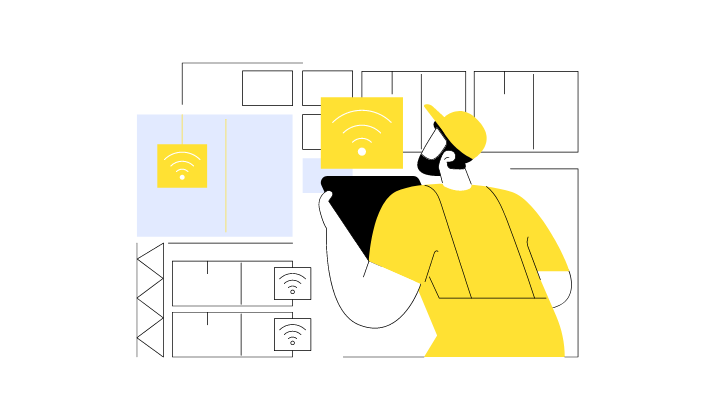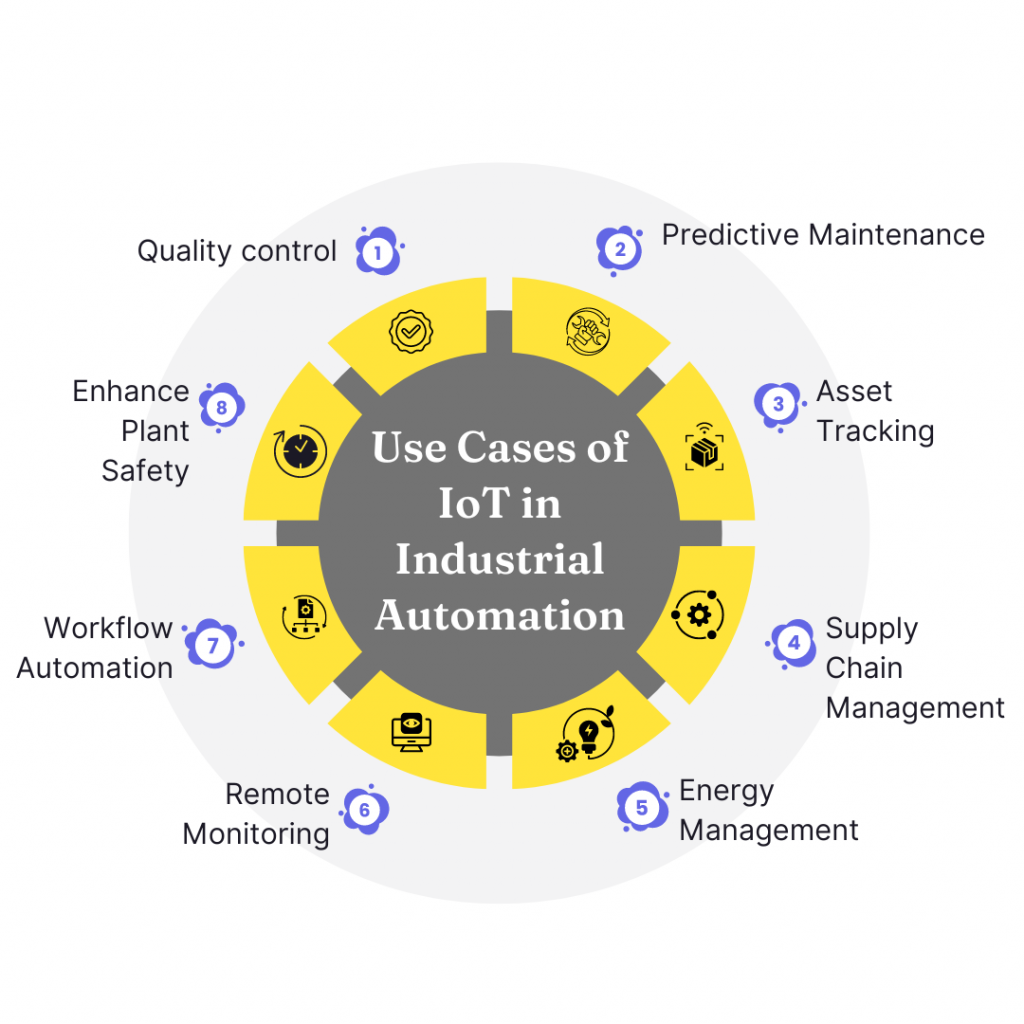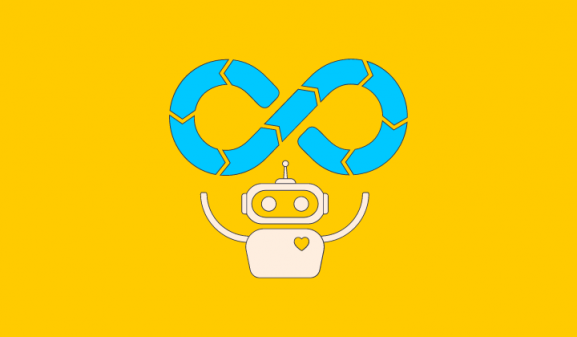The Internet of Things (IoT) is transforming industries worldwide, and industrial automation is at the forefront of this revolution. If you’re curious about how IoT technology is reshaping manufacturing and production processes, you’ve come to the right place. This technology not only boosts efficiency but also opens new avenues for innovation and productivity in various sectors.
In 2024, the Internet of Things (IoT) is changing how factories and industries work. It’s like having smart tools and machines that talk to each other, making things faster and better. Think of it as having a group of friends who help each other out to get a job done quickly.
With IoT, factories can spot problems before they happen, save time, and make sure everything runs smoothly. Imagine if machines could tell you when they’re about to break down, just like your friend letting you know they need help before things go wrong. There’s a big number to show how important this is: by 2025, there will be over 75 billion IoT devices being used around the world. That’s a lot of smart machines working together!
But, just like when thinking about the “Pros and Cons of Having a Baby,” deciding to use IoT isn’t simple. You have to think about the good and the bad. It’s interesting how choosing to use technology can be like making big life choices. Both need you to think about what’s best in the long run.
The global market for the industrial Internet of Things (IoT) was predicted to be worth $394.0 billion in 2023, with Grand View Research predicting an annual growth rate of 23.2% through 2030.
According to Statista, the number of IoT-connected devices is expected to reach 75 billion by 2025.
So, in 2024, IoT is really important for making industries smarter. But, just like any big decision, it’s all about figuring out the best way to make it work for everyone.
Get ready to discover the exciting role of IoT in industrial automation, how it’s shaping the future, and what this means for businesses and workers alike.
The Growing Influence of IoT on Industrial Automation
As we delve into the impact of the Internet of Things (IoT) on industrial automation, it’s essential to understand how deeply IoT technologies have penetrated this sector. Industrial automation, the use of control systems, computers, and robots to handle different processes and machineries in an industry to replace a human being, is not a new concept. However, IoT brings a new layer of connectivity and intelligence to this domain.
IoT devices collect and analyze data in real-time, allowing for unprecedented levels of efficiency and productivity. They enable machines to communicate with each other and with central control systems, creating a harmonious and interconnected production environment. This connectivity is not just about making processes faster; it’s about making them smarter.
For example, predictive maintenance powered by IoT can foresee equipment failures before they occur, significantly reducing downtime and maintenance costs.
Moreover, IoT technologies facilitate remote monitoring and control, allowing for more flexible and responsive manufacturing processes. This means that managers can make informed decisions based on real-time data, regardless of their physical location. The result is a more agile, efficient, and competitive manufacturing process.
In 2024, the role of IoT in industrial automation is expected to expand further, driving innovations in supply chain management, production processes, and even worker safety. The integration of IoT is not just transforming how industries operate; it’s redefining the very fabric of industrial processes.
Must Read: Key Benefits of Warehouse Automation for Your Business
The Benefits of Integrating IoT in Industrial Automation
Integrating IoT into industrial automation brings a multitude of benefits that can transform operations, improve efficiency, and reduce costs. Let’s explore the key advantages that businesses can reap from embracing IoT technologies:
1. Enhanced Efficiency and Productivity: IoT devices automate and optimize manufacturing processes, significantly reducing manual intervention and the potential for human error. This automation not only speeds up production but also ensures higher quality and consistency in output.
For instance, sensors can monitor conditions and adjust operations in real-time to maintain optimal performance levels.
2. Predictive Maintenance: One of the standout benefits of IoT in industrial automation is predictive maintenance. By continuously monitoring the condition of equipment, IoT devices can predict when maintenance is needed, preventing unexpected breakdowns.
This proactive approach reduces downtime, extends the lifespan of machinery, and saves on repair costs.
3. Improved Safety: IoT technologies enhance worker safety by monitoring environmental conditions and identifying potential hazards in the workplace. Wearable IoT devices can track workers’ health indicators and alert them to dangerous conditions, reducing the risk of accidents and ensuring a safer working environment.
4. Better Decision-Making: With IoT, decision-makers have access to a wealth of real-time data. This information allows for more informed decision-making, enabling businesses to respond swiftly to market changes, optimize resource allocation, and improve their overall strategic planning.
5. Energy Efficiency: IoT devices can also lead to significant energy savings by optimizing power usage in industrial processes. Smart sensors can adjust energy consumption based on real-time demand, ensuring that no energy is wasted, thus contributing to more sustainable operations.
These benefits highlight the transformative potential of IoT in industrial automation. By leveraging IoT technologies, industries can achieve unprecedented levels of efficiency, safety, and productivity, positioning themselves to thrive in the competitive landscape of 2024 and beyond.
If you want to learn: Top Smart Warehouse Solutions to Boost Your Profits
Top Use Cases of IoT in Industrial Automation
Deloitte studies show how important creating IoT environments are to businesses: in its “Industry 4.0” report, 94% of poll respondents said that digital transformation is an important strategic goal for the company.
IoT has applications in many industries, resulting in more efficient and productive industrial automation operations. Let’s get into some specific examples:
1) Quality control
Another important IIoT application is the ability to monitor the quality of manufactured products at any stage: from the raw materials used in the process to the manner in which they are transported (via smart tracking applications) to the reactions of the end customer once the product is delivered.
This information is critical for assessing the company’s efficiency and making the required modifications if problems are identified, in order to optimize operations and detect issues in the production chain as soon as possible. It has also been established that risk prevention is critical in more delicate industries, such as pharmaceuticals and food.
2) Predictive Maintenance
Increased predictability can help reduce the negative effects of delay, which disrupt operations and drive up expenses. Averaging four hours in duration and costing two million dollars per disruption, downtime affected 82% of businesses over the past three years. These occurrences result in irreparable material damages to both reputation and finances.
By applying predictive maintenance, organisations can proactively avert such critical situations and establish a streamlined operational process. Organisations may utilise industrial IoT applications and systems to forecast equipment failure, as opposed to addressing outage after it has already transpired.
By affixing IIoT sensors to machinery, critical data pertaining to its operation, output, state, and other relevant aspects are gathered. Proficient personnel of the organisation have the ability to retrieve and derive valuable insights from this data, which is stored in the cloud.
Concurrently, sensors are capable of promptly notifying entities of any alterations or irregularities, such as marginal declines in functionality. Engineers are consequently afforded sufficient time to examine and rectify the problem prior to its impediment to the manufacturing process.
3) Asset Tracking
As your company rises, there will be the number of assets you must manage. Manually searching for equipment is time-consuming and inefficient. Fortunately, GPS-powered industrial IoT apps can be used to track each item both in the facility and while it is in transit.
Sensors can be mounted on items, boxes, packing, vehicles, or other locations based on your requirements. You may not only keep track of the products’ location, but also their condition, temperature, light exposure, and other important details.
IIoT applications include reducing waste and safeguarding raw materials. For example, such systems can quickly identify the product that is closest to its expiration date, preventing wasteful waste. Using specific tags such as radio-frequency identification (RFID) or Bluetooth-enabled tags enables warehouse personnel to prioritise products and reduce misuse.
4) Supply Chain Management
Supply chain management is a complex process that encompasses a product’s complete lifecycle, from raw materials to its final condition. The implementation of IIoT brings much-needed transparency, control, and automation.
Such technologies enable staff to track items in real time, monitor storage conditions, optimise routes, and find goods within storage. When a delay occurs, managers will be notified quickly so that the situation can be mitigated. Furthermore, IoT devices can predict traffic congestion and provide an optimal route to avoid blockages.
Do you know? Role of Automation in Supply Chain Resilience
5) Energy Management
To lower your energy expenditure, add IoT sensors to your infrastructure to monitor the systems that use energy. For example, such sensors can switch off the lights at a specific time or when the building is vacant. A sophisticated IoT HVAC monitoring system covers energy consumption management for heating, ventilation, and air conditioning.
Such systems take a lot of energy to run and tend to raise firms’ costs. The Internet of Things (IoT) for industrial applications may collect and analyse data to determine optimal utilisation and performance.
6) Remote Monitoring
As a result of the fact that the majority of factories and plants are situated outside of cities, managers are required to travel significant distances in order to check on the company. Applications for the Industrial Internet of Things include remote monitoring and control capabilities, which make it possible to make adjustments to settings and operate equipment.
In the case that your system detects a gas leak, for instance, you have the ability to immediately activate shutdown measures and so prevent a potentially hazardous situation. The use of remote control can not only prevent mishaps from occurring, but it can also save a significant amount of money because it is expensive to send a technician to a remote place.
On a more extensive scale, the capabilities of remote monitoring make it possible for managers to supervise and control several plants without any interruptions. Companies are able to reduce their expenditures associated with human resources and operations by not assigning each topic to a team of experts.
At the same time, having a comprehensive overview of the complete company can be advantageous when it comes to making decisions for the company.
7) Workflow Automation
Use the Internet of Things to automate tedious or manual tasks, allowing employees to focus on higher-value jobs. Sensors can be used to initiate tasks like as material handling, component assembly, and equipment maintenance, increasing workflow efficiency. IoT makes your workflows more simple, effective, and responsive to your specific needs.
8) Enhance Plant Safety
IIoT-enabled machines can generate real-time data about the plant’s status. Monitoring equipment deterioration, plant air quality, and the incidence of illnesses in a company, among other indicators, allows for the avoidance of hazardous scenarios that endanger employees.
This not only improves facility safety, but also increases productivity and staff motivation. Furthermore, the economic and reputational penalties associated with poor corporate safety management are minimised.
Must read: Why Regulatory Compliance Automation Matters in 2024
Estimated Revenue When Industrial Automation and IoT Work Together
As the fusion of Industrial Automation and the Internet of Things (IoT) becomes more prevalent, understanding the financial implications of this integration is crucial.
A report by Markets and Markets predicts that the IoT in manufacturing market size was valued at $50.0 billion in 2021 and is poised to generate a revenue of around $87.9 billion by the end of 2026, presenting a CAGR of 11.9% from 2021 to 2026.
This growth underscores the significant impact IoT integration can have on revenue in industrial automation.
Increased Operational Efficiency: The primary financial benefit comes from heightened operational efficiency. IoT-enabled automation systems can drastically reduce downtime, lower maintenance costs, and enhance production efficiency. This reduction in operational expenses directly boosts the bottom line, reflecting positively on overall revenue.
Revenue Growth from New Business Models: IoT opens up new business opportunities and models. For example, manufacturers can offer predictive maintenance as a service based on data collected by IoT devices, creating new revenue streams. Additionally, the ability to monitor and control equipment remotely can lead to the development of new, innovative products and services, expanding market reach and revenue potential.
Enhanced Product Quality and Customer Satisfaction: Improved product quality is another financial benefit of integrating IoT with industrial automation. Consistent and high-quality products strengthen brand reputation, increase customer loyalty, and can lead to higher sales volumes. Furthermore, IoT can provide valuable customer usage data, enabling companies to tailor their offerings more closely to customer needs and preferences, potentially unlocking additional revenue.
Cost Savings Through Predictive Maintenance: The ability of IoT systems to predict when machines will need maintenance allows companies to avoid unexpected breakdowns and the high costs associated with them. This predictive maintenance capability not only saves on repair costs but also extends the lifespan of machinery, resulting in further cost savings and increased capital efficiency.
Energy Efficiency and Sustainability: IoT-enabled systems can significantly reduce energy consumption by optimizing energy use in real-time. This not only leads to cost savings on energy but also positions companies as leaders in sustainability, a strong selling point in today’s environmentally conscious market.
The synergy between Industrial Automation and IoT is paving the way for substantial financial gains. By enhancing operational efficiency, opening new revenue streams, improving product quality, and reducing costs, this integration is set to redefine the economic landscape of industrial sectors. As we move into 2024 and beyond, companies that successfully leverage this powerful combination are likely to see significant growth in revenue, solidifying their competitive edge in the market.
Predictions for IoT’s Impact on Industrial Automation in 2024
As we look toward the future, the Internet of Things (IoT) is set to further revolutionize industrial automation. Here are some predictions for how IoT might shape industrial automation by 2024:
1. Widespread Adoption Across Industries: IoT technology is expected to become even more pervasive across various sectors, including manufacturing, logistics, agriculture, and energy. As businesses recognize the value of IoT in driving efficiency and innovation, its integration into industrial processes will become a standard practice.
2. Enhanced Interconnectivity and Collaboration: The evolution of IoT will lead to even greater interconnectivity between different systems and devices. This network of connected devices will facilitate seamless collaboration between different stages of the production process, resulting in a more cohesive and flexible industrial ecosystem.
3. Breakthroughs in Artificial Intelligence and Machine Learning: The combination of IoT with advancements in artificial intelligence (AI) and machine learning will usher in a new era of smart automation. These technologies will enable machines to make more autonomous decisions based on data analysis, further reducing the need for human intervention and making industrial processes more efficient and adaptable.
4. Increased Focus on Sustainability: IoT will play a crucial role in promoting sustainable industrial practices by enabling more efficient use of resources and reducing waste. Real-time monitoring and analytics will help industries minimize their environmental footprint and comply with increasingly stringent environmental regulations.
5. Improved Worker Safety and Productivity: The application of IoT in monitoring and enhancing workplace safety will continue to grow. Wearable IoT devices and environmental sensors will provide workers with real-time alerts about potential hazards, while also monitoring their health and well-being, thereby creating a safer and more productive working environment.
In 2024, the integration of IoT in industrial automation will not just be about technological upgrades; it will signify a shift towards smarter, more connected, and sustainable industrial practices. As industries continue to embrace IoT, the potential for innovation and efficiency gains is boundless.
Best tools for you: Top Compliance Automation Tools for 2024
Final Say
The integration of the Internet of Things (IoT) into industrial automation has marked a pivotal shift in how industries operate, bringing about enhanced efficiency, improved safety, predictive maintenance, better decision-making, and energy savings. These advancements are not just changing the present landscape but are also setting the stage for a future where industrial processes are more intelligent, interconnected, and sustainable.
As we look towards 2024, the role of IoT in industrial automation is poised for even greater expansion. The continuous evolution of IoT technologies promises to further optimize manufacturing processes, enhance supply chain transparency, and usher in a new era of industrial innovation. Businesses that embrace these changes can expect to remain competitive, agile, and resilient in the face of future challenges.
Related Blog: IoT in Healthcare: Applications, Benefits, Challenges, And Future






